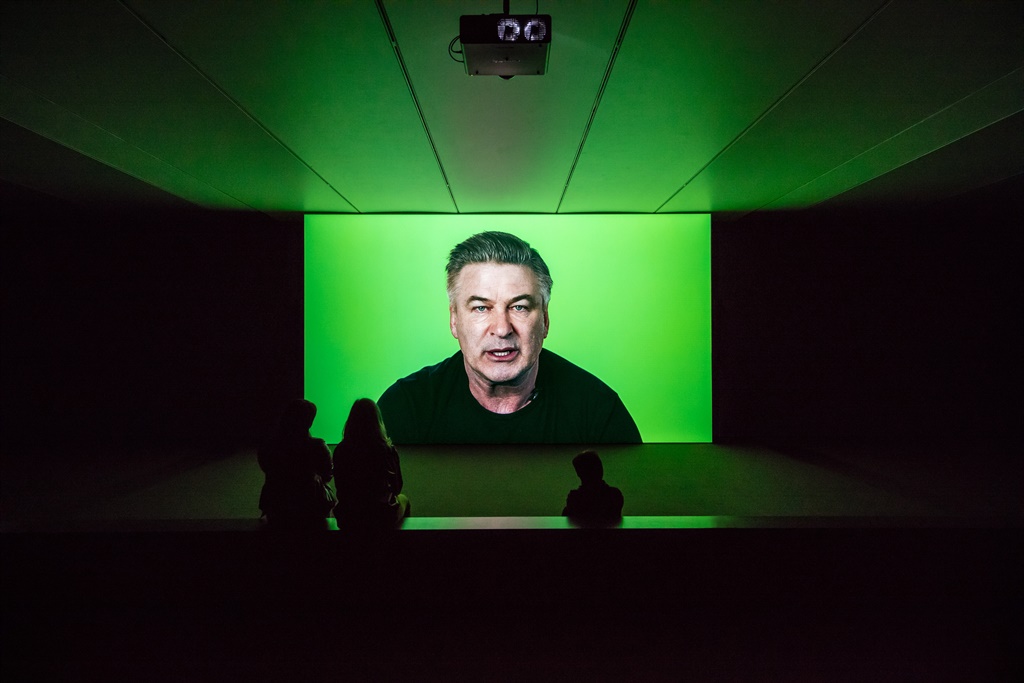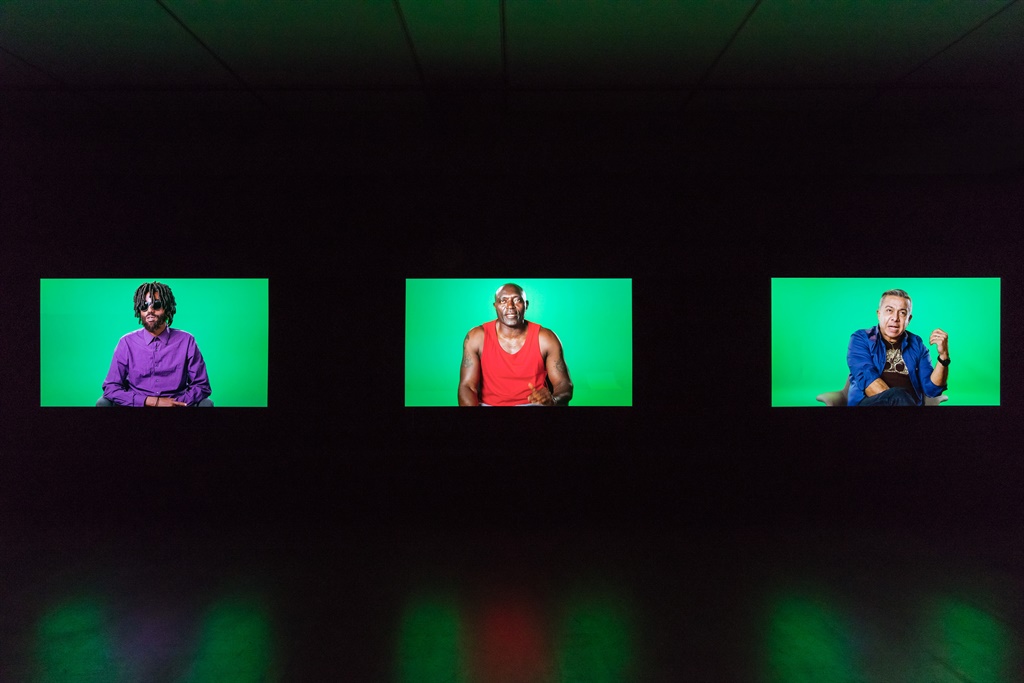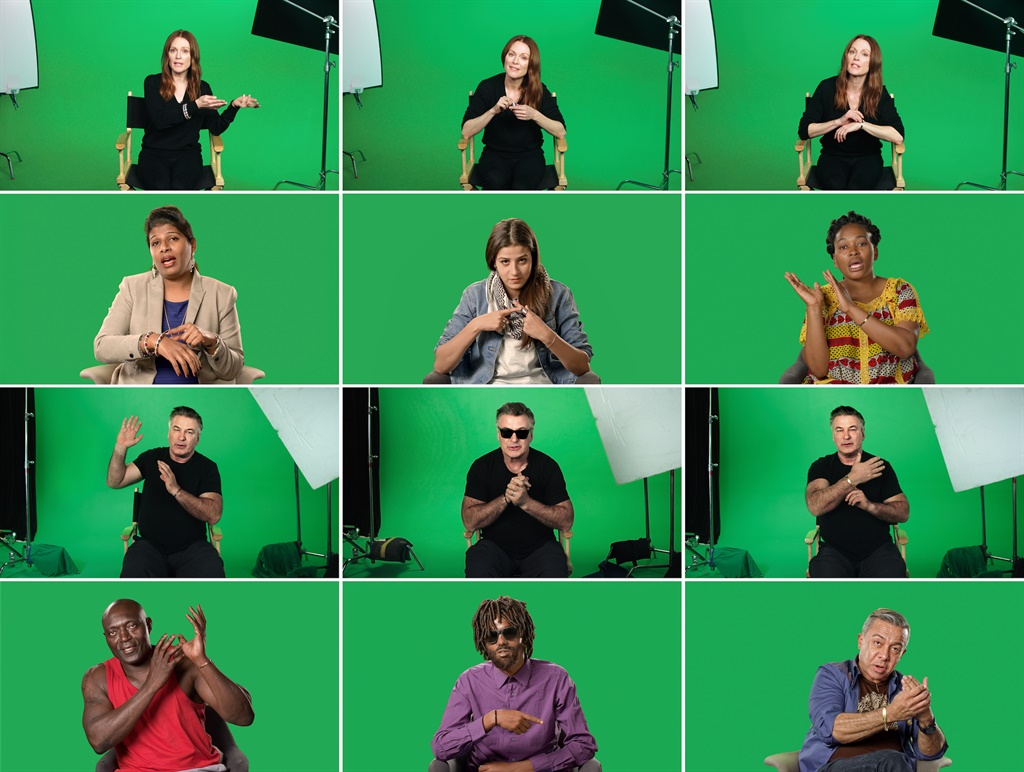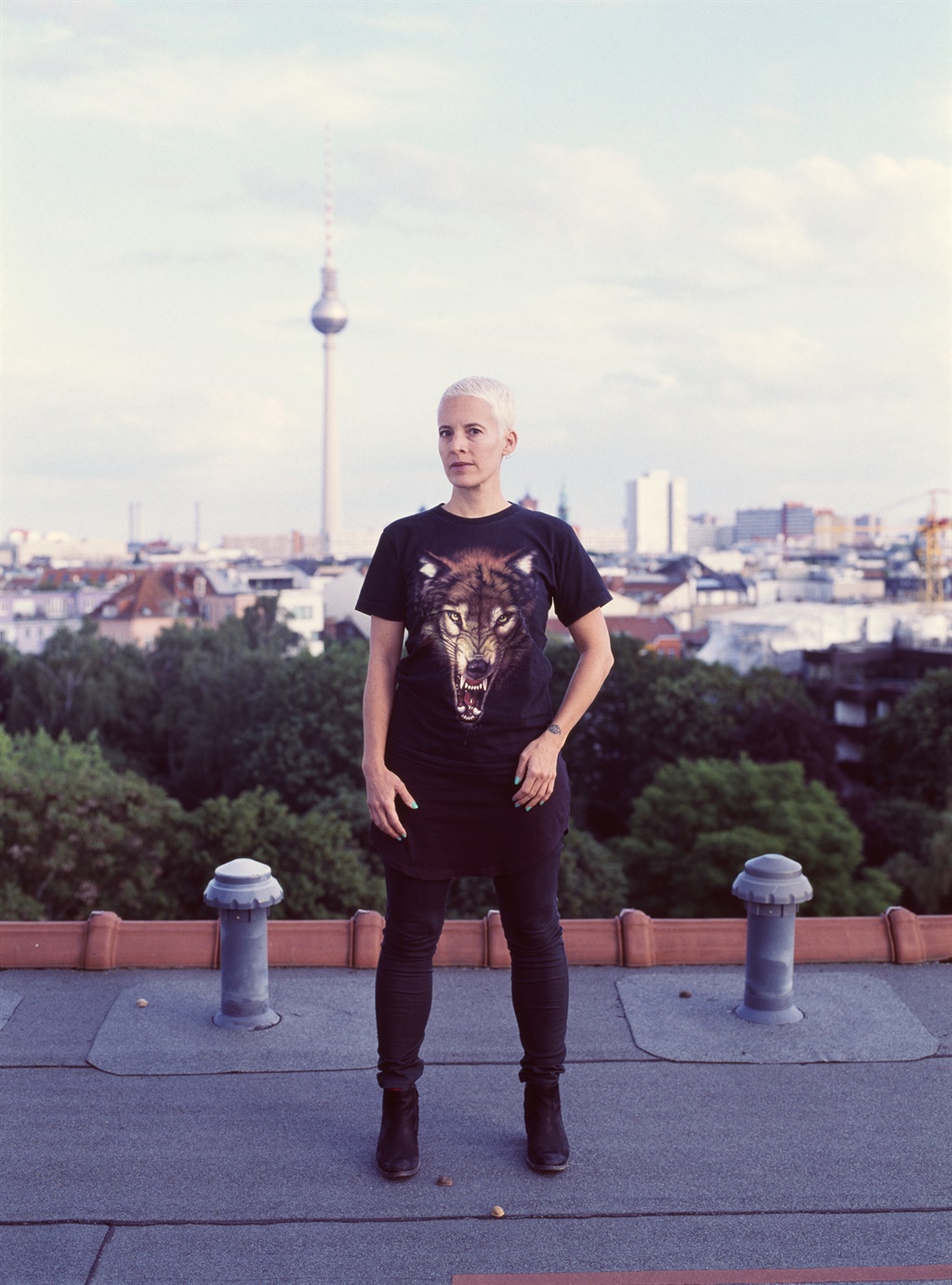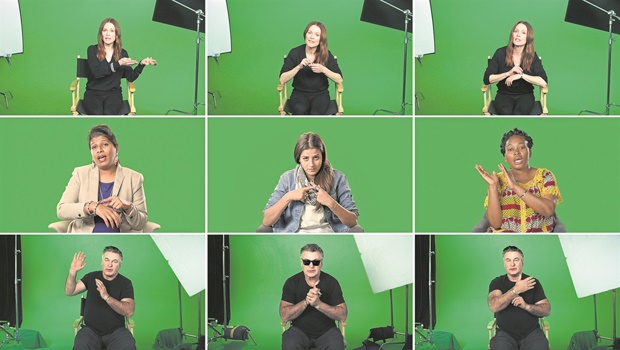
When you walk into the gallery, you are confronted with a massive television screen. US actors Alec Baldwin and Julianne Moore are speaking as they sit in front of a stark, blank green screen. It takes you a few minutes to realise they’re narrating people’s stories.
These are stories of fleeing violence and persecution, of having to leave your home because it’s no longer safe, of crossing borders and arriving in a foreign land with nothing but the clothes on your back. These are lives completely opposite to those of the celebrities you’re watching.
In a separate, cordoned off room, there are six more television screens, but they’re smaller and the people on them aren’t famous. These are the refugees we heard about on the first screens, and they are telling their stories themselves.
In Love Story, South Africa-born and Berlin-based artist Candice Breitz explores identity and what makes us care about some stories above others. She uses two celebrities – white, American and famous – arguably at the height of visibility, to tell us about the journeys of people in crisis – refugees. I caught up with the artist via email to explore her thoughts.
When thinking of our interview, my first question was how you got Alec Baldwin and Julianne Moore involved in the project. I suppose it’s ironic that my first interest is in the celebrities involved in Love Story rather than the six refugees who reveal their harrowing experiences. Would you say that this “hierarchy in interest” is what Love Story is about?
Love Story offers you the same set of stories told in two different ways. The experience of the work lies, perhaps, in measuring the distance between these two different forms of narrative address.
I’m interested in how empathy can be triggered (or not) by different modes of storytelling. How do stories have to be packaged before we’re willing to spend time with them? What kinds of storytellers are able to win and hold our attention? What kinds of stories move us? Why is it that the same audiences that are driven to tears by fictional blockbusters remain affectless in the face of actual human suffering?
These are some of the questions that Love Story attempts to engage with. I’ll leave it at that because an experience of the work is also an opportunity for each visitor to consider and find answers to these questions for themselves.
As for how I was able to engage Alec Baldwin and Julianne Moore to appear in Love Story, Alec made contact with me about a decade ago after seeing one of my exhibitions in New York. We’ve been in sporadic contact since then, and when I approached him to appear in Love Story, he was kind enough to introduce me to Julianne. Both made their decisions to appear in Love Story based on long phone calls during which I articulated the concept to them.
What are your feelings about South Africa’s treatment of refugees?
South Africa is not doing nearly as much as it could to ensure fair treatment of refugees and to efficiently process asylum applications. One of the interviewees in Love Story is a Congolese woman who left Kinshasa after experiencing extreme sexual violence that was politically motivated. She fled to South Africa to find a safer life for herself and her children.A decade after her arrival in South Africa, the country has yet to offer her asylum, although women who have been subject to sexual violence as an instrument of political vengeance or war are clearly eligible for refuge.
South Africa too easily forgets the debt that it owes to other countries on the continent; countries that offered moral and other support during the struggle against apartheid. Rather than seeking to address xenophobia, South African politicians and officials too often choose the populist path, fanning the flames that make it so hard for refugees and migrants to live dignified lives in this country.
From articles in the media, I thought that Germany was the country to take in the most refugees since 2015, when actually it’s Jordan. Do you think that the misperception that “white”, developed nations are doing more for refugees is part of the problem? And why do you think there has been such a vitriolic backlash against refugees by right wing groups?
The answer to the first part of your question is yes.
As for the second part, the viral growth of right wing violence (both verbal and physical) directed at refugees can only be properly understood in relation to the complex social, economic and political conditions that foster and breed such violence and hatred. I won’t pretend to be able to answer such a complex question in a few sentences, because I think one needs to look specifically at the circumstances that have given rise to right wing populism and xenophobia in each cultural and political context.
From your experiences interviewing refugees in Berlin, what is it like for them being in a strange country? Are people accepting towards them or violent? And in New York? Which country (Berlin/NY or South Africa) did you get the sense they felt the most accepted?
I interviewed two people in each of the cities where I shot footage for Love Story—those cities being New York, Berlin and Cape Town—which means that I’ve archived the intimate accounts of a total of six people who have had refugee experience. To draw broad conclusions regarding what the climate is like for refugees in general in any particular country would be disingenuous and unproductive. Each individual has a different experience of arriving in a new country, depending on their personal circumstances, the degree of trauma that they have experienced in leaving their home country, the particular city or province that they arrive in, their economic means, their ability to speak (or not speak) the local language, the warmth or lack of warmth with which their cultural, social and religious preferences are received in a given context, and the privilege or lack of privilege of the community in which they try to build new lives.
The two Cape Town-based interviewees that share their stories in Love Story — José Maria João and Mamy Maloba Langa — could not have had more different experiences in that city. José, a former child soldier who escaped a UNITA bush camp before fleeing Angola to come to Cape Town via Namibia, felt instantly welcome in Cape Town. He describes having encountered warmth and hospitality from South Africans almost immediately upon his arrival. Mamy, on the other hand, has faced hardship after hardship, and continues to live extremely precariously.
- Love Story is on at the Goodman Gallery in Joburg until March 9




 Publications
Publications
 Partners
Partners





